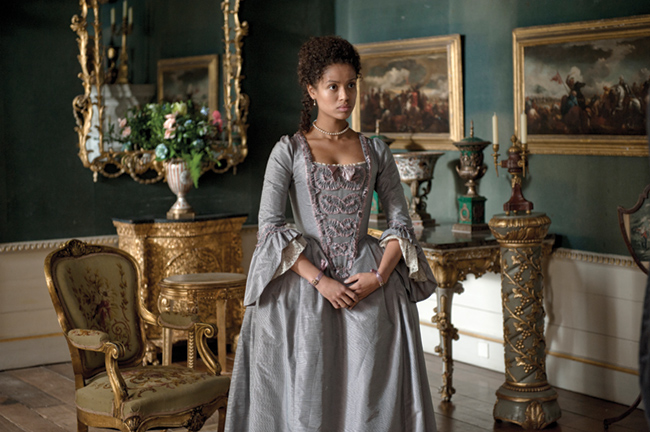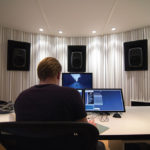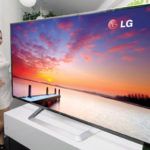
Welcome To The 4K Future
Posted on Feb 8, 2014 by Alex Fice
All Is Lost, starring Robert Redford was shot on an Arri Alexa with Zeiss Standard Speed, Lightweight and Angenieux Optimo Lenses, mastered to 3k. Pic Credit Credit: Daniel Daza.
In the first of a series of articles looking at 4k technology we look at the acquisition and perhaps more importantly at the workflow of higher resolution cameras for movies and TV.
We are witnessing a new industry unwinding itself and preparing for decades of existence.” Written by this magazine ten years ago as our clarion call to the High Definition industry, but also a sentence that could be pinned to the emergence of higher than HD imagery and in particular 4k imagery. But it’s not really the same, HD broke the mould of ‘good enough’ resolution and started an upward trend in ever higher pixels counts. It was inevitable that higher resolutions would be demanded, mainly by the TV manufacturers who wanted a new wave of products to sell but also by the guardians of cinema who needed regular injections of technology to encourage people to their local movie houses. 3D has failed so higher resolutions have to be put to work. But cinema’s ‘monkey on their back’ is the TV broadcast world who have their own problems in keeping viewers. We will come on to those in an article later in this series but make no mistake 2014 will see a 4K channel from SKY in the UK and probably 4K streaming from Netflix and other similar services.
So it’s bigger, better and on with the show. Well as far as the consumer is concerned, yes. But in the video production world it seems that resolution is one of the smallest bones of contention because – it’s all about the workflow.
There is still a shortage of 4k cameras, RED obviously is the exception and continue to reach new resolution goals, recently with their Dragon sensor. Canon has their C500, Sony have their F55, F5, F65 and FS700 with the upgrade. They also just launched their handheld PXW-Z100 JVC has had a 4k camera for a while now and even GoPro offer 4k resolution but at a unusable frame rate. Panasonic has now released their 4k roadmap with camera announced for 2014 and accessories like a 4k monitor. Blackmagic Design are on the cusp of launching their own 4k camera with Thunderbolt 2 on-board but at the time of writing the camera is still not shipping.
No Screams For More Resolution
But it is telling that DoPs aren’t the ones screaming for more resolution. In fact many are using their craft to ‘damp down’ the sharpness by using old lenses and filtering. One DIT Nye Jones who has worked on movies like Skyfall, Thor: The Dark World and Prometheus puts it more plainly, “Most DoPs are not as concerned with pixels and more concerned with lenses and latitude. Correctly in my opinion and aptly demonstrated through the Arri Alexa, which delivers less resolution than its competitors but is vastly more successful. The most relevance of resolution is in fact to the Post Supervisor, VFX Supervisor and Colourist. Having said that about DoPs, they do of course care about quality and resolution brings quality.”
Nye also talks of his experience with Sony’s flagship 4k camera the f65 and how he had to adapt his technique for the extra resolution. “The first UK feature to be shot and finished in full 4K was Belle – I believe. I was extremely impressed with the quality of the F65 when I used it, but on both occasions I felt compelled to soften the look of the extremely sharp resolution delivered. With diffusion filters and old lenses, I tried to move away from the crystal clear sharpness that heavily denotes HD video. Sharpness is an attribute in glass not necessarily as warmly received in a sensor.

Belle – one of the first films shot with Sony’s f65 camera was also graded in 4k in Soho’s Molinare.“4K workflow doesn’t just mean more pixels, it means deeper ones. 16-bit ACES colour workflow, gives cameras like the F65 a huge gamut. This in turn provides accessibility to the image and its manipulation for the VFX supervisor and the Colourist (working to the assumption that this is an asset – I have worked with DPs who would argue against!). The cost is in the data pay load, there is a great deal of ‘RAW’ to look after. The F65 with its huge acquisition resolution and depth of colour gives it a different pallet to other cameras, there is more room for possibilities. A distinguishing quality that people look for to create their own style of photography.”
DoP Anthony Dod Mantle commented on resolution versus latitude on his shooting of Rush and Heart Of The Sea, “The chase for superior resolution and definition is interesting but as far as image capture for films is concerned I work with colour and definition and resolution. I do need latitude and the amazing thing about Alexa and Alexa RAW as opposed to ProRes is you have this really solid ability to capture an immense amount of information, you still have to know how to light and where to put your stop. I grew up with seven stops of information from a dead black to a burnt out white.
“When I shoot on smaller cameras now which are more susceptible to burning out or to dying in the blacks I’m used to it. But I love it if I can go out and shoot with as much latitude as possible, control the exposure and take it back in to my little harbour of love in the grade and then it goes to the editing and I get it again and I know what I’ve got and know where I can take it. So for me the optimal situation is as much latitude as possible and ability to shoot but resolution I can control partially with old glass, as I did on Rush, with inferior and damaged glass.”
4k Workflow Case Study
If you’ve read Asa Shoul’s description of how he sees the current digital workflow problems you will be interested in hearing how one small boutique post house are handling their 4k workflow. Dado Valentic of My Therapy is ostensibly a colourist but he is also a technical guru who attracts manufacturers who want him to ‘tune’ their ‘close to shipping’ products. As a boutique he has to have extra reasons for his clients to seek him out, 4K is one of those reasons and he hasn’t worked on anything less since August last year. “We have to do things that other big facilities don’t do. I do have a very good relationship with certain manufacturers and I do get things a little bit earlier. We do give feedback with features that might get implemented in releases. I have developed colour science for Sony to help make their new cameras more useable.
“We have just upgraded our DIT systems that can monitor 4k and can playback 4k. We can do on-set playback as well in 4k because that was lacking and you couldn’t make sure the focus was right or not. So we needed 4k monitors of reasonable size that we could carry around. The system is now running on the laptop, I don’t want to have trolleys anymore, there isn’t enough room in this country to get them through doors. We have a kart that can fold together and a Pelicase where we can put the laptop and all the equipment.
“I design these systems by figuring out where the problems are and then fix them. So it’s based on a MacBook Pro Retina laptop with the specific NVIDIA card. There’s only one model that has that card, then we use expansion chassis where you can put PCI cards inside, you can run SSD raids in it. The 4k interface is from Blackmagic Design and we also use a Hyperdeck Shuttle as the recorder.
“I don’t like complicated workflows and I won’t suggest any workflow to my clients unless it’s real time. To me doing anything less than RAW is a waste of time, so we generate a lot of data, so we use LTO6 and have a set-up using Thunderbolt for back-up to it. The SSD raids are great for transcoding, off-loading and copying. So we off-load everything straightaway and then we back everything up on LTO6. In terms of cost and speed this is the optimal solution at the moment. The amount of data does put people off and they worry about the cost so we had to figure out how to make it work for everyone. If we are not able to attend on-set what we do is we lend clients our hard drives and then they can back-up on those RAIDs and they will brings us back the drives to our labs. The costs can escalate if you don’t manage it, if you only back-up to hard drives you are going to end up spending more money than usual. But at the end you have image quality that is ten fold in comparison with HD images. “
Working With Sony F5/F55
“There is a beautiful dynamic range in the images you get from the F5 and F55 and I don’t think I have ever had one shot that clipped with them. One thing that Sony hasn’t done so well is the colour science. They have something that they call SLOG2 which is not optimum, so we have developed our own colour science for them. We are able to extract out the RAW file because in that RAW file is all the colour information but it’s hidden. So we have to take it out or extract it. It wasn’t so hard to figure out as the camera has a beautiful curve so we have our own transforms that we do. The next thing we do is to transcode everything in to ProRes or DNxHD so they can edit with that. So the workflow is, we back-up everything on-set, we bring it to the lab and usually do transcodes over night. That at the moment is going at about 90 fps. We use really beefed-up DaVinci Resolve systems for transcoding. Then we synch the audio and then apply the look that the director wants which could be a CDL file or he could just give us a still reference, whatever. We apply that look and then we put in the cloud a small H.264 format file so you can look at it on a tablet straightaway. Now we’re going to start to deliver the rushes online as well. This is our cloud system which we haven’t launched officially yet but we will launch it in February.
“So then the clients edits it and send us an XML, then we’ll load all the LPO tapes with the raw material, then we start grading with our Resolve system. We grade in real time with our 4K projector in 4k. We usually strike a DCP from it or whatever the client wants from it. The process doesn’t slow us down, we’re not expending four times as much time because you don’t really need to. We have to use fast storage most of the time when we grade to get real time performance but it’s not really hard.”
Learning From The Stills Industry
We have obviously only just touched the surface of the subject of 4k or higher acquisition and its workflow. In fact the resolution doesn’t seem to be the biggest problem – it’s how you deal with the data. The new Digital Colour Association has its work cut out for it to try and standardise any type of digital workflow especially when you have Dado and his ingenius designs already working with over a year’s worth of 4k work racked up.
The 4k world is gearing up. 4k Sky boxes, 4k iPads, 4k streaming boxes, 4k cameras. But there is still a big legacy of SD/HD productions. Not one commercial in the UK is broadcast in high definition according to Dado so there are still plenty of reasons to use cameras that don’t offer 4k. But 4k acquisition promises to be the new standard especially as Studios now want to archive in it. Ironically one of the main reasons Dado has been producing 4k for so long is that many of his clients are stills photographers who have moved in to motion. “They don’t even question whether we should be shooting 5, 6 or whatever ‘k’ because they have been doing it for years.













